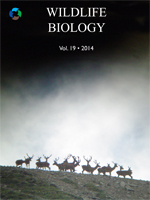Agricultural intensification often leads to fragmentation of natural habitats, such as forests, and thereby negatively affects forest specialist species. However, human introduced habitats, such as hedges, may counteract negative effects of forest fragmentation and increase dispersal, particularly of forest specialists. We studied effects of habitat type (forest edge versus hedge) and hedge isolation from forests (connected versus isolated hedge) in agricultural landscapes on abundance, species richness and community composition of mice, voles and shrews in forest edges and hedges. Simultaneously to these effects of forest edge/hedge type we analysed impacts of habitat structure, namely percentage of bare ground and forest edge/hedge width, on abundance, species richness and community composition of small mammals. Total abundance and forest specialist abundance (both driven by the most abundant species Myodes glareolus, bank vole) were higher in forest edges than in hedges, while hedge isolation had no effect. In contrast, abundance of habitat generalists was higher in isolated compared to connected hedges, with no effect of habitat type (forest edge versus hedge). Species richness as well as abundance of the most abundant habitat generalist Sorex araneus (common shrew), were not affected by habitat type or hedge isolation. Decreasing percentage of bare ground and increasing forest edge/hedge width was associated with increased abundance of forest specialists, while habitat structure was unrelated to species richness or abundance of any other group. Community composition was driven by forest specialists, which exceeded habitat generalist abundance in forest edges and connected hedges, while abundances were similar to each other in isolated hedges. Our results show that small mammal forest specialists prefer forest edges as habitats over hedges, while habitat generalists are able to use unoccupied ecological niches in isolated hedges. Consequently even isolated hedges can be marginal habitats for forest specialists and habitat generalists and thereby may increase regional farmland biodiversity.
How to translate text using browser tools
1 May 2016
Forest specialist and generalist small mammals in forest edges and hedges
Hella Schlinkert,
Martin Ludwig,
Péter Batáry,
Andrea Holzschuh,
Anikó Kovács-Hostyánszki,
Teja Tscharntke,
Christina Fischer





